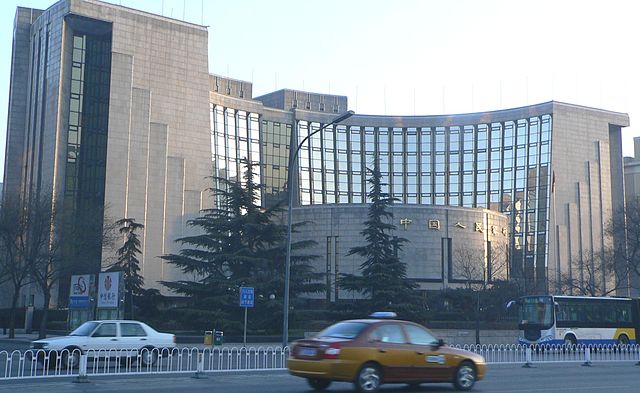China delivered another dual cut today to support the struggling economy, 25bp to the interest rates and 50bp to the reserve ratio. As a historical move, the deposit rate ceiling was removed, making interest rates fully liberalised and increasing the CNY's chance of being a reserve currency. The easing is likely to keep short-term growth stable but risks aggravating the existing problem faced by the economy. We remain cautious for the medium-term outlook
On late Friday the People's Bank of China (PBoC) cut interest rates by 25bp and the banks' reserve requirement ratio (RRR) by 50bp. This was the second dual cut since August. The benchmark one-year lending rate is now at historically low of 4.35% and the one-year deposit rate is 1.5%. The exact timing of the cut was unforeseen as China does not have scheduled monetary policy meetings, but we have expected a rate cut and two cuts to the RRR for the remainder of this year. Chinese markets are closed but the easing will likely be welcomed by the market on Monday, which is eager to see more support to growth.
There are several remarkable changes today. For one, the PBoC decided to keep the borrowing rates for personal housing accumulation fund loan unchanged, reflecting Beijing's aim of reducing borrowing costs without fuelling the housing market. This is a fund, which both employers and employees contributed to, accumulate over time and can be used to borrow from in case of employees' housing purchases.
Another noteworthy change was to remove the deposit rate ceiling, which was lifted to 1.3x in February. This was the last step to liberalise interest rates in China, as the lending rates were already freed up in 2013. This move sends the signal that Beijing is ready to push for financial deregulation and thereforeincreases the CNY's chance of being included in the IMF's Special Drawing Right (SDR) basket significantly.
"We should keep in mind that the Chinese interest rates are now fully liberalised, theoretically. In practice, the banks may still set the deposit rates as if there was a ceiling, at least in the short run. This was what happened after the lending rate floor was removed in July 2013. After a while, the tough competition between banks in attracting depositors could push the effective deposit rates much higher and resulting in positive real deposit rates again. This would dampen speculation demand from Chinese retail investors, who have speculated in both the equity and real estate markets", says Nordea Bank.
The cut to the rates and RRR was mainly motivated by the struggling economy. Earlier this week the Q3 figure revealed that GDP growth dipped to 6.9%, the first time below 7% in six years and very few indicators point to a noticeable recovery in the near term. Fearing for an even larger slowdown in Q4, the authorities had to ease borrowing costs even further. This was made possible by the low inflation, which was only 1.6% in September.
"We maintain our long-held view that the Chinese economy is not likely to collapse in the near term.Growth would be kept above 6.5% for this year and the next by the accommodative monetary and fiscal policy. The on-going housing market recovery will also add some support. However, monetary easing cannot solve China's long-term structural challenge, which is characterised by overcapacity in selected manufacturing sectors and debt overload among many state-owned enterprises that are kept alive by more cheap credit. In fact, easy monetary policy and excess credit expansion was the root to the problems today. Solving the problem using the problem itself does not add much comfort. For this reason, we remain cautious on China's medium-term outlook and still see a fairly large risk of a hard landing, added Nordea Bank.



 Gold Prices Fall Amid Rate Jitters; Copper Steady as China Stimulus Eyed
Gold Prices Fall Amid Rate Jitters; Copper Steady as China Stimulus Eyed  Best Gold Stocks to Buy Now: AABB, GOLD, GDX
Best Gold Stocks to Buy Now: AABB, GOLD, GDX  Canada Stocks Steady as Markets Await Fed and BoC Decisions
Canada Stocks Steady as Markets Await Fed and BoC Decisions  Bank of Korea Downplays Liquidity’s Role in Weak Won and Housing Price Surge
Bank of Korea Downplays Liquidity’s Role in Weak Won and Housing Price Surge  Fed Meeting Sparks Division as Markets Brace for Possible Rate Cut
Fed Meeting Sparks Division as Markets Brace for Possible Rate Cut  Brazil Holds Selic Rate at 15% as Inflation Expectations Stay Elevated
Brazil Holds Selic Rate at 15% as Inflation Expectations Stay Elevated 































